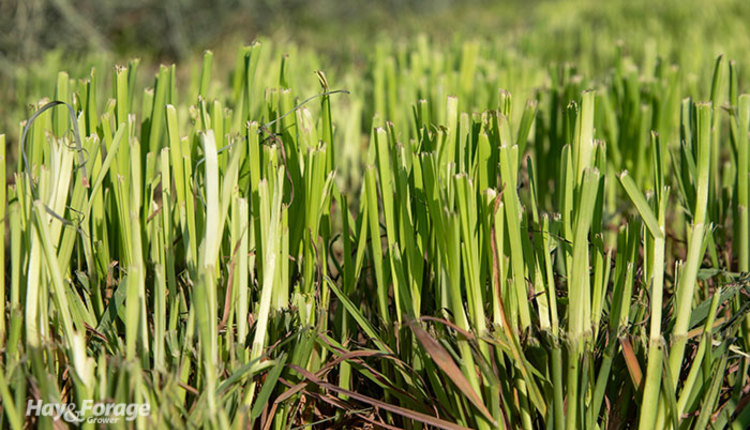
For the past nine years, I’ve watched my neighbor mount his riding lawn mower and cut his lawn. As nearly as I can tell, the mowing deck is set as low as it can possibly go; it’s clear that this is not an activity he particularly enjoys and operates under the mantra of “shorter means less often.”
The offshoot of my neighbor’s cutting strategy is that he has the first lawn to turn brown once a couple weeks of dry weather arrive during mid-summer, weed encroachment is horrific, and his once pure stand of Kentucky bluegrass has now degraded to a hodgepodge of opportunistic grass and broadleaf species that merely cover his soil. The contrast of his lawn to those around it is striking.
Let’s move it up a notch to a hayfield. Savvy hay producers who grow both pure alfalfa stands and alfalfa-grass mixtures know that they can’t cut the latter as short as the former, at least if they want to maintain grass in their mixed hay. In a similar manner, graziers know that repeated overgrazing events that take lush pastures down to putting-green height are a recipe for permanent damage to the stand. The negative impacts are accelerated with drought.
Grasses, in general, are less tolerant of ultra-low cutting heights than legume species such as alfalfa. Even Kentucky bluegrass, which exhibits about the most tolerance to short defoliation, has its limits. From a hayfield perspective, it’s probably safe to say that the introduction of disc-type mowers has made it easier to cut grass stands out of existence because harvest heights can be and are set too low.
Although there is variability to cutting-height tolerance between grass species, regrowth is typically generated from reserve carbohydrates stored in the lower stem base. If routinely removed, this will impede both stand regrowth and longevity. Also, leaving some photosynthetic plant tissue aids in more rapid recovery. For grasses, rapid growth following a first cutting is especially important to gain as much yield as possible for the second cut before dry, hot weather sends plants into semi-dormancy during summer.
For most cool-season grasses such as orchardgrass or tall fescue, cutting heights need to be set at 3 to 4 inches, with the latter being preferred. Cut warm-season grasses such as sorghum-sudangrass or native species at 6 to 8 inches.
There are really few downsides to a higher grass cutting height. More low-quality stem is left in the field, regrowth is hastened, stand health and long-term productivity are preserved, and the risk of forage soil contamination is reduced.
So, if you’re looking to kill your grass stand, simply cut it too short a few times. If you don’t believe me, I can put you in touch with my neighbor, although he still hasn’t figured it out.

